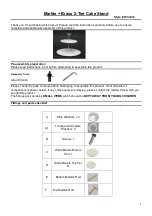
5
COMMISSIONING AND CONFIGURATION
28
SAFETY-RELATED 2D LIDAR SENSOR | TIM361S
8022483/108R/2018-07-09 | SICK
Subject to change without notice
5.5.1
Operating modes/operational statuses
The TiM361S safety-related laser scanner has the following operating modes and
operational statuses:
Power On and boot phase
Begins after connecting and/or interruption of the supply voltage, and ends with
operational readiness or fault/error
Operational readiness
Begins after Power On and boot phase, and ends 1 min or more after connection of the
supply voltage. Operational readiness is indicated optically by the "green" LED on the
device.
Operational status (monitoring mode)
(See also Normal functioning)
The TiM361S automatically enters this status after reaching operational readiness and
after the output "Device Ready" (OUT4) has changed to the "high" status. To do so, the
TiM361S must not be in configuration mode. (See Configuration mode)
Configuration mode
Once the sensor is connected to the SOPAS configuration software via the USB
interface, the sensor can be configured.
The output "Device Ready" remains unchanged until write access to the device is
initiated by SOPAS (e.g., changing a parameter, downloading field data, or accessing
the "Save permanently" function), then the output "Device Ready" (OUT4) enters the
status "low" for a period of approx. 1 s.
Fault/error
The TiM361S automatically enters this status when it detects an internal error. If there
is an internal error, the output "Device Ready" (OUT4) is deactivated and enters the
"low" status. This status is shown optically on the device.
Safety function
The TiM361S safety-related laser scanner has a safety function.
The
safety function
is detecting the presence or penetration of an object in a defined
detection field (protective field).
When the
safety function
is requested, the
Defined status
is entered within max.
134 ms (max. 2 scans) and the safety-related output signals (OUT1-3) assigned
according to the detection field are switched off. (deactivated status)
Example:
When a mobile platform approaches a person, a protective field can trigger an optical
or acoustic signal. If the person does not respond and the mobile platform continues to
approach, the infringement of an additional protective field by the person can be used
















































